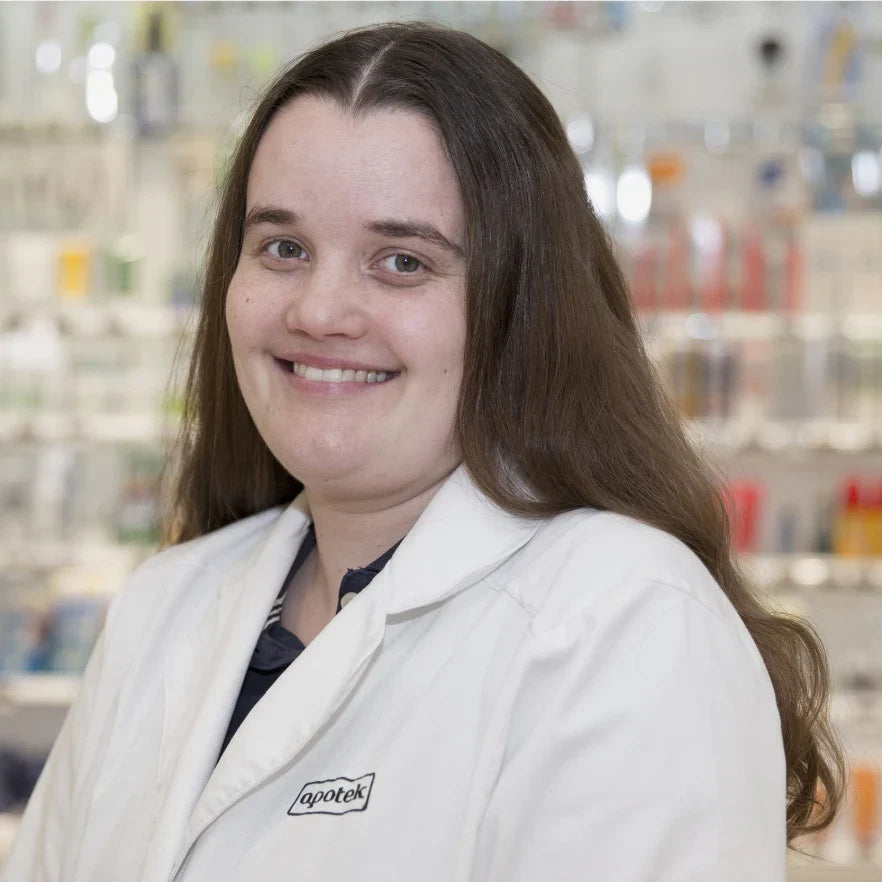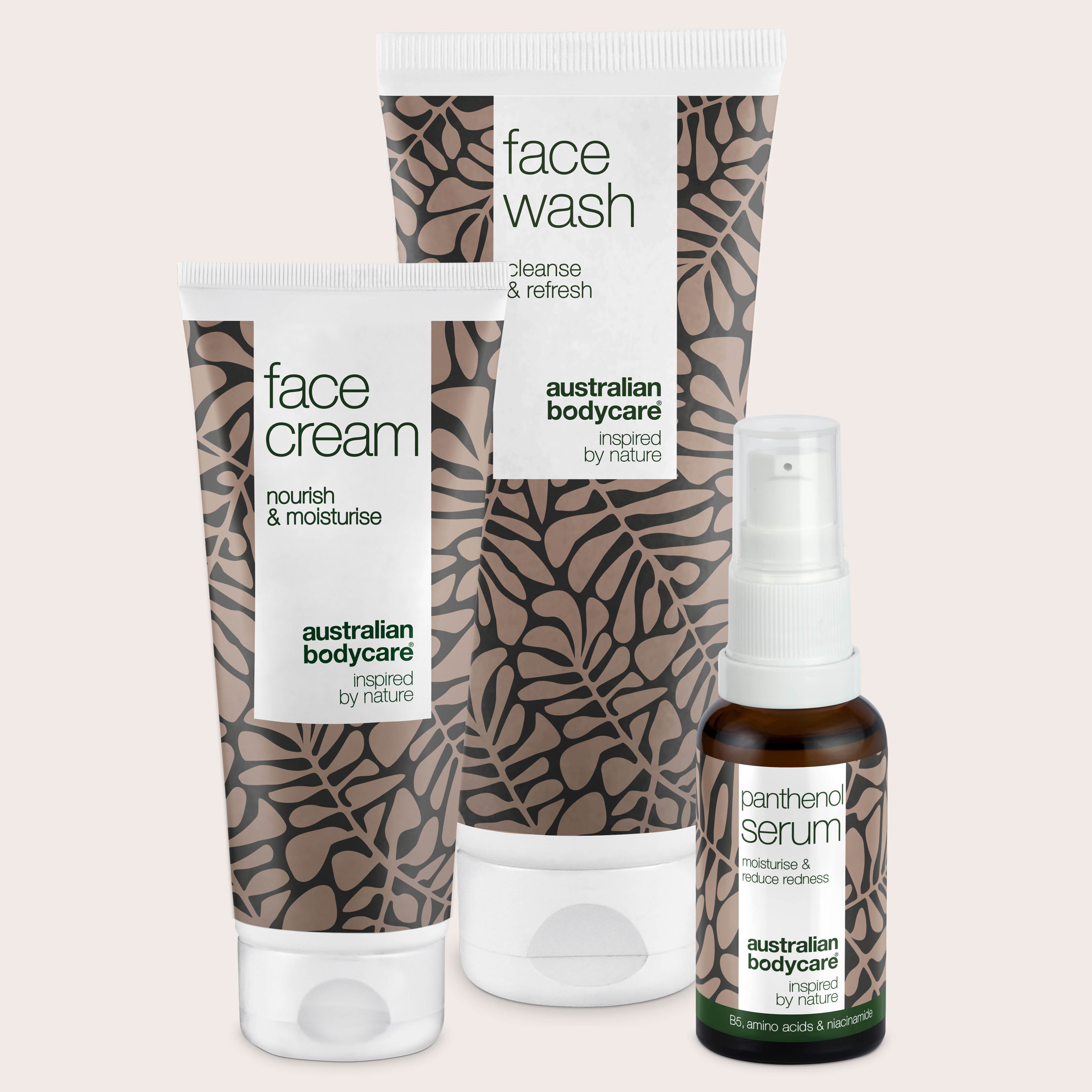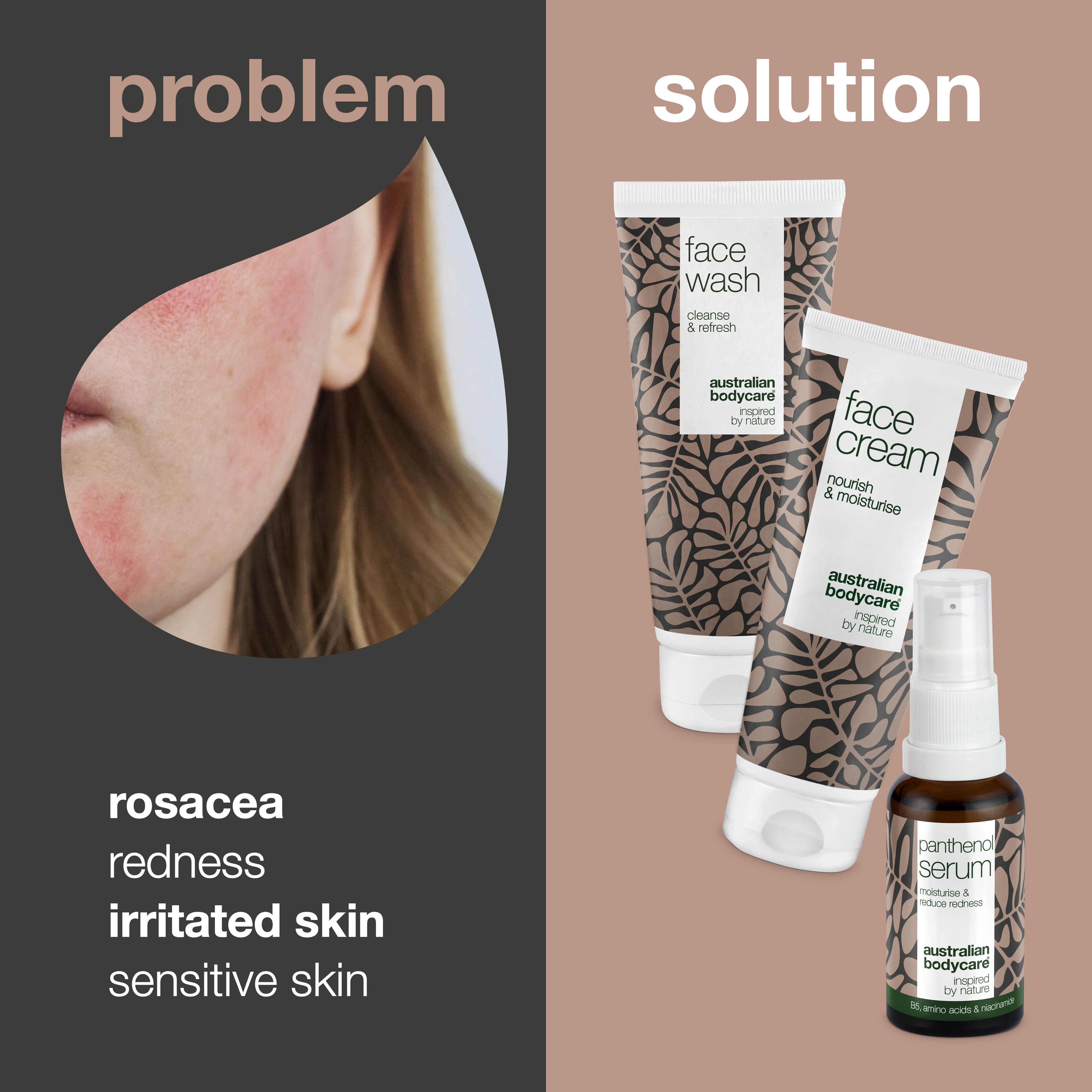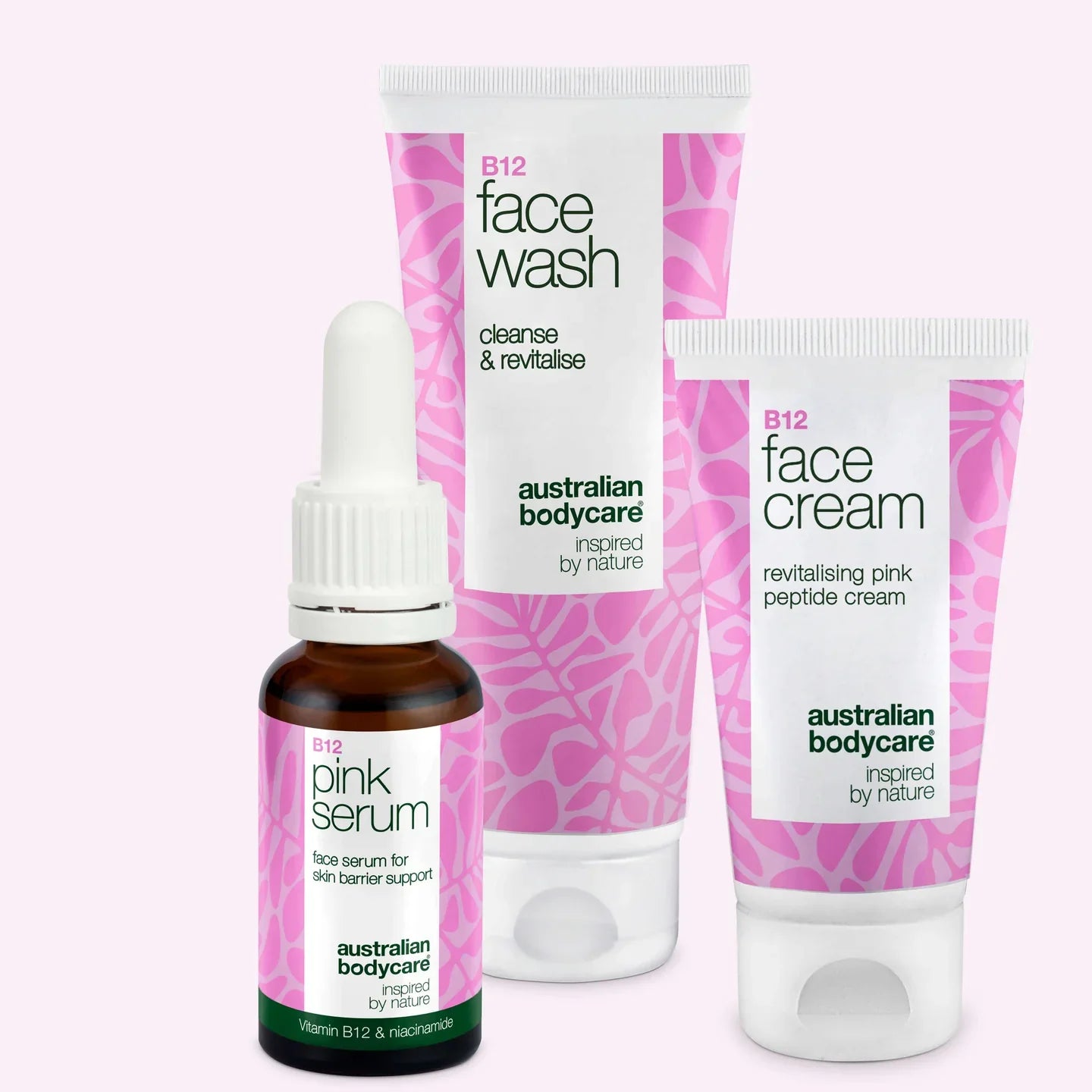Rosacea – How to treat and prevent it
Rosacea is a common skin complaint which affects many women every year. It is troubling and uncomfortable, but fortunately there are good treatments and preventive measures for those who suffer from rosacea.
You can read a lot more here, and get an idea of what Rosacea is like, and why some people are affected by it.
Table of contents
What is rosacea?
The skin is the largest living organ – and in fact the most vital. It is the skin that protects the body from the environment, and its primary function is as insulation against heat, impact and water, and it helps to regulate temperature. That is why it is so important to look after your skin.
Rosacea is a skin disease that affects the face. It appears typically as a form of inflammation, with attacks of inflamed red bumps on the skin, distended blood vessels and general flushing. It is a chronic skin disease, which means that for those who suffer from it, the condition is long-lasting and will often recur. However, it can be treated and prevented.
The flushing normally starts in the middle of the face, and can become worse with time. The changes in the skin may often become worse or more pronounced after very spicy foods, sunlight or alcohol. In English it is pronounced rosácea (ro-zay-sha).
Go immediately to: Treatment for Rosacea
Who is affected by rosacea?
If you have rosacea, you are among at least 4-5 % of adults estimated to be affected by it. The condition can affect everyone – both men and women – but it tends to affect more women than men. As many as two out of three patients with this skin condition are women.
On a larger scale, rosacea affects about 10 % of the population with light skin. It is quite unusual for people of colour to be affected by the condition.
Most often, rosacea affects women aged between 30-50. In most cases it breaks out at the end of the 20s, even in women who have not previously had problems with skin inflammation such as acne.
Symptoms of rosacea
Rosacea is a complicated skin condition, and it can appear in several different ways. In some cases it is mild, while others are troubled by more pronounced symptoms. The skin condition can appear on the face, scalp, nose, chest and throat, often starting in the middle of the face around the eyes. About one in five of those affected by the disease will have symptoms in the eyes before the condition develops in the skin.
There are different types of rosacea. Each has different characteristics, depending on its particular symptoms.
Vascular rosacea
This form of rosacea is also known as erythematotelangiectatic rosacea (ETR), and is typically a milder form of rosacea with redness and flushing of the face. The persistent redness of the face is accompanied in some patients by clearly visible small veins, especially close to the nose and on the cheeks.
Papulopustular rosacea
Papulopustular rosacea is an inflammatory form of rosacea. The symptoms appear as chronic redness in the face, with outbreaks of red and yellow bumps. The bumps are called pustules or papulae, and to many people look like acne. However, the papulae are caused by a different form of inflammation.
Phymatous rosacea
The third form of rosacea is also called rhinophyma. The noticeable symptom here is a red nose with very uneven skin. The nose becomes enlarged and the skin thickens. It can in some cases spread to the skin on the cheeks and forehead. This form of rosacea gives the face a swollen look, due to the thickening of the skin. The great majority of cases of rhinophyma are seen in men.
Ocular Rosacea
A fourth form of rosacea is known as ocular rosacea. The characteristic of this form is that it does not only affect the skin, but also the eyes. Rosacea in the eyes has a number of uncomfortable features, from a sensation of having something in the eye, dryness or tears, or tingling, itching or even a burning sensation in the eyes.
The eyes will often appear bloodshot, or the edges of the eyelids may become red, while styes, swollen eyelids and light sensitivity are also typical symptoms of this form of rosacea. At the worst, untreated ocular rosacea can result in permanent damage to the cornea, visual problems, or, even worse, blindness.
Four phases of rosacea
Rosacea goes through different phases – as many as four of them. Thus if you do not discover this skin condition or get treatment, it will progress to the next phase.
Here is an overview of the symptoms at the various phases.
The preliminary phase – pre-rosacea
The first phase, or perhaps the preliminary phase, is typically connected with the milder form of rosacea, vascular or erythematotelangiectatic rosacea. The preliminary phase may in many cases last for several months or even years, with outbreaks of redness and hotness in the facial skin. It will typically occur when you eat hot or very spicy food, when you drink alcohol, if your skin is exposed to heat or cold, or if you are under stress.
The first phase
After the preliminary phase, the skin disease progresses to the actual first phase. Here the symptoms are increasing and chronic redness on the face, especially the cheeks, forehead and chin. At the same time, there will often be extensive dilation of blood vessels in the face. The dilated veins or visible small blood vessels are also called telangiectasia.
Second phase
In the second phase you will find the redness of the face is chronic. The second phase is typically associated with the papulopustular form of rosacea, in which outbreaks of red and yellow bumps similar to acne appear in the skin together with the flushing and dilated blood vessels. The inflamed yellow pustules often erupt on the cheeks.
Third phase
In the third phase the symptoms will be the same as in the second phase, but the flushing, dilated blood vessels and the yellow bumps in the skin will become even more pronounced. Additionally, the third phase can include swelling, lumps and thickening of the skin. This places phymatous rosacea or rhinophyma in the third phase.
If the skin condition is allowed to develop, the various forms of rosacea will follow on from each other. Thus if rosacea is not treated, the symptoms will progress from mild to serious problems. It is always important, therefore, to start treatment as soon as possible.
Go immediately to: Treatment for Rosacea
Causes of rosacea – where does it come from?
No direct cause of rosacea has been found. What can be seen with certainty is a state of inflammation in the sebaceous glands – often on the cheeks and chin and between the eyebrows. No one has ever succeeded in documenting the appearance of bacteria or fungi on the skin. However, the inflammation of the skin irritates the sebaceous glands, so that the red and yellow bumps are formed on the skin, while at the same time there are changes in the blood vessels, and the skin appears ruddy.
Some results suggest that the skin condition occurs as a result of an abnormal function of the immune system. Among other things, the immune response normally produces proteins which combat skin infections, bacteria and damaged tissue. With rosacea, vasodilation is caused in the skin instead. This means that the muscles around the blood vessels in the skin relax, so that the blood vessels expand and new ones develop in the surface of the skin.
It is also suspected that Demodex mites may be involved in causing rosacea. It has certainly been shown on several occasions that patients with rosacea have larger numbers of Demodex mites in their skin than others. Demodex mites live in hair follicles.
Although there is no scientific evidence of the cause of rosacea, there are several factors that are known to exacerbate the skin condition.
- Heat and cold
- Sunlight
- Highly spiced foods
- Alcohol
- Cortisone (steroid cream)
- Medications that dilate the blood vessels
- Stress
Treatment for rosacea
Rosacea can be treated in various ways. In mild cases treatment with creams is effective – especially cream prescribed by a doctor, which you can buy at the pharmacy.
In more severe cases, treatment with tablets may be necessary to break down the inflammation. This treatment is often supplemented with creams, and patients are recommended to continue using them after the treatment with antibiotics is ended. These creams are often effective against flushing, but require a doctor's prescription.
In severe cases with more pronounced changes in the skin, the doctor can treat them with different tablets if the antibiotic treatment has not been effective.
Laser treatment
If you are bothered by ruptured and dilated blood vessels, you may benefit from IPL laser treatment. This type of treatment is very effective for the ruddy appearance of dilated blood vessels in the skin. It treats the symptoms on damaged skin.
IPL is an abbreviation for Intense Pulsed Light. The laser directs energy through the skin, but the light rays exclusively target the red structures – in this case the blood vessels. The blood vessels are broken down by the intense energy and light, so they contract. If you are going to have treatment with an IPL Laser, it is important that you are not sunburned, because this increases the risk that the skin will be burned instead. You must not sunbathe or visit a solarium, therefore, in the weeks before the IPL treatment.
Skin care with rosacea – what you can do yourself
Another possibility is skin care to minimise the symptoms of rosacea yourself. The most important way to reduce rosacea is to set up a good routine with good skin-care products. This means keeping the skin clean by cleansing it morning and evening with mild products and finishing with a moisturiser that is not too greasy and will not clog the pores.
Use something like Face Wash and Face Cream from Australian Bodycare in your daily skin care routine. Face Wash is mild and gentle, and washes deep down to remove dirt from the skin – without irritating it. Face Cream is a light cream that moisturises the skin thoroughly without making it greasy. It is quickly absorbed into the skin, where it strengthens and soothes.
Both can be used morning and evening. Both Face Wash and Face Cream have a high content of natural skin-care ingredients, and especially Australian Tea Tree Oil plays a major role, as it is anti-inflammatory and antibacterial.
We recommend supplementing with our Panthenol Serum. It contains Niacinamide, which has been shown to have a beneficial effect with rosacea.
Diet advice with rosacea
Diet plays an important part in treating rosacea. Diet alone is not enough to treat the condition, but it can help to make a significant difference. Make a diet plan for yourself that includes anti-inflammatory foods. Alkaline foods in particular help to reduce skin and body inflammation.
These include kale, cucumber, broccoli and beans, which are all highly alkaline foods. More moderately alkaline foods include avocados, beetroots, cabbage, garlic, radishes, tomatoes, ginger and lettuce.
To strengthen the blood vessels in your skin, you can for example eat pomegranates, blackberries, water melon and olive oil, all of which have a directly strengthening effect on blood vessels.
Preventing rosacea
Prevention is always better than a cure – and this applies to rosacea too. You can actively take a number of steps yourself to reduce the risk of developing rosacea. As with treatment, this means having a good skin-care routine every morning and evening, to keep your skin free of dirt and dust. A mild cleanser is one of the most important preventive measures, together with a good face cream.
Rosacea cream
A cream for rosacea is one that is not too greasy, so that it does not clog the pores and sebaceous glands. Look for a cream with a light consistency, that will provide the right amount of moisture. If there is no sunscreen in the product you are already using, you should supplement with a non-oily sun barrier with at least factor 30 in summer and a lower factor in the winter.
If you wear make-up, you should also avoid using a greasy foundation. It clogs easily and does not allow your skin to breathe. Use a lighter foundation instead, which will not settle as a heavy mask on the skin, but allows fresh air to get through. Perhaps you can use a mineral powder or foundation that allows the skin to breathe through the make-up.
Diet and lifestyle
To prevent rosacea, it is best to avoid hot drinks and alcohol. At the same time, it is a good idea to avoid highly spiced foods, which can also trigger outbreaks in your skin.
It helps if you do not smoke either, but try to follow a healthy, varied diet, with a minimum of sugar, and lots of vegetables, which all have an anti-inflammatory effect. Unwind, and reduce your stress level by finding a rhythm for a calm everyday life.
FAQ
What is rosacea?
Rosacea is a chronic skin disease that can appear in mild or serious forms, with flushing of the face, dilated blood vessels and inflamed red and yellow bumps in the skin. Without treatment, the disease usually develops over time to give more pronounced skin problems. Both men and women can suffer from rosacea.
What does rosacea look like?
Rosacea can appear in different ways, depending on type and phase. In the mild form, the face is flushed and hot, with dilated blood vessels. In more serious cases the skin is red, with yellow pustules in the skin and possibly an overgrowth of skin on the nose, which can produce a lumpy expression.
What causes rosacea?
There is no conclusive scientific explanation or evidence for why some people suffer from rosacea. Some findings indicate, however, that it is due to abnormal function in the immune system, and larger numbers of Demodex mites, which are hair follicle mites.
Is it possible to get rid of rosacea permanently?
Rosacea is a chronic skin disease which tends to recur. You cannot, therefore, get rid of it permanently. In spite of this, however, it is possible to treat and relieve the symptoms considerably, so that you are almost unaware of the disease.





